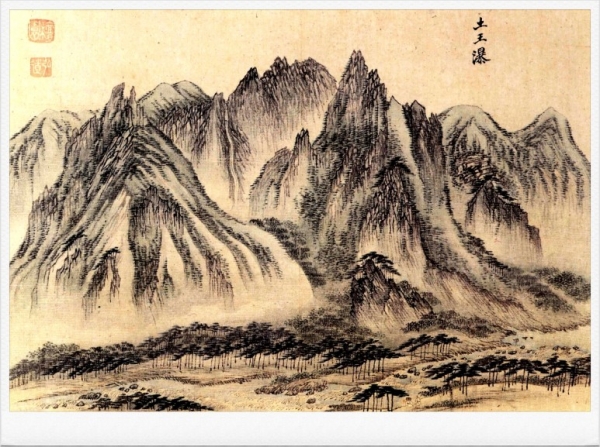
“Danwon Kim Hongdo had studied painting from an early age, and there was nothing he could not do. His paintings of characters, landscape, Taoist immortals, Buddhist, flowers and fruits, birds and worms, and fish and crabs were all masterpieces, and there were few who could match him, even in comparison to the old greats. He was particularly good at Taoist immortals painting and flowers and bird painting, and that alone was enough to resonate for a generation, which will also be passed on to later generations. He also painted Korean characters and daily life so well that their shapes were very realistic, including a scholar studying, a merchant going to the market, a vagabond, a gyubang, a farmer, a woman spinning silkworms, a double house, a double door, a rugged mountain, a tree in the field, and so on, and there had been no such skill before. A painter can usually imitate accurately what he wants to paint only after he has built capabilities by seeing, learning and mastering what is painted on cloth and paper, but Danwon has ingeniously figured it out on his own and is able to take away the harmony of nature in an artful way, which cannot be done unless he is naturally much better than the average person." (Danwon's teacher, Gang Se-hwang 1713-1791)
Kim Hongdo was born in 1745. The origin of his surname was Gimhae, and his father was Kim Seok-mu. His great-grandfather was a Manho (a military officer), which shows that his family was a military nobility, but by the time Kim Hongdo was born, his household belonged to a middle-class.
The role of a great teacher, Gang Se-hwang, cannot be overlooked in the development of a young boy who was born into a middle-class family with no connection to art, even though he was exceptionally talented.
It is not known how Kim Hongdo came to learn painting from Gang Se-hwang, an accomplished noble artist and prestigious dignitary, but he began learning from him "when he was teething." At the time, Gang Se-hwang was forty years old or so and living with his wife’s household in Ansan, Gyeonggi-do. Based on this, it is sometimes claimed that Kim Hongdo was a native of Ansan.

A prodigiously talented artist, Kim Hongdo was apparently already a painter of the Dohwaseo (Academy of Painting) before the age of twenty. In 1765, when King Yeongjo turned 71 and was looking to celebrate his eightieth birthday, a folding screen was prepared for the occasion, and a record shows that Kim Hongdo, who was only 21 at the time, painted the pictures on it. To be the sole artist for the king's great feast at the age of just over twenty means that he was recognized as one of the most talented artists of his time.
In 1773, at the age of twenty nine years, Kim Hongdo made another important connection in his artistic life when he painted portraits of King Yeongjo and the crown prince. The crown prince who would later become King Jeongjo was impressed with Kim Hongdo's work.
As King Jeongjo later wrote, "Kim Hongdo is very talented painter and I have long known him for his such skills. Thirty years ago, he painted my portrait and from then on, I let him preside over all matters related to the painting business," he became a strong supporter who helped Kim Hongdo exert his full potential.”
Kim Hongdo, who painted a portrait of King Yeongjo, was recognized for his work and thereby, the following year, promoted to the rank of the Gammokgwan (a rank of a minor officer) of the Saposeo. Two months later, his mentor Gang Se-hwang was transferred to the Saposeo, and they began working together. Gang Se-hwang recalled this.
“When I first became a colleague with you at the Saposeo, you were considerate on my old age and immediately took over the hard work whenever there was work to be done, which I cannot forget.”
By the time he was in his thirties, Kim Hongdo was so famous for his paintings that it was said, "The people who wanted his paintings came every day in droves, and the silks were piled up and the doors were jammed with people, so that he could not even find time to sleep or eat."
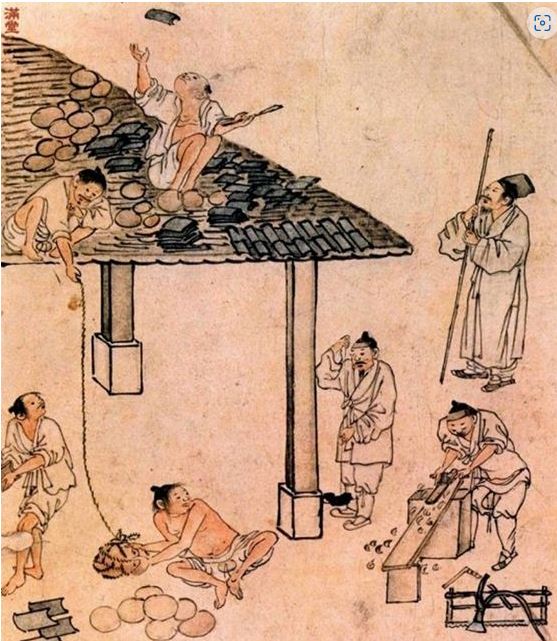

Around this time, Kim Hongdo painted mainly Taoist paintings such as "Taoist Immortal,” "Group of Taoist Immortals," "A Taoist Boy Playing a Flute," and "A Taoist Immortal Playing a Saenghwang," character paintings such as "Seowonajipdo (Gathering in the West Garden)" and "Lifetime," and folk paintings such as "Seodang (School)," "Wrestling," "Threshing," and "On the Side of the Well”.
Among them, his folk paintings fascinated viewers with their vivid depictions of people and the dramatic composition of each scene. Most of the figures in his folk paintings are common working people. Craftsmen making tools at the forge or building houses, workers plowing fields and cutting grass, women washing clothes in the water, and merchants doing business were all depicted dynamically in his paintings, which were close to the sentiments and lives of the common people.
In 1781, when he was thirty-seven years old, Kim Hongdo painted a portrait of King Jeongjo and was made an officer called the Angichalbang in Andong, Gyeongsang Province.
For this, Gang Se-hwang wrote, "It was rare for the king to raise the status of a technical officer (middle-class), and Danwon enjoyed the highest honor as a commoner." Although it was only a sixth-class minor post, it was an honor that was rarely given to a painter.
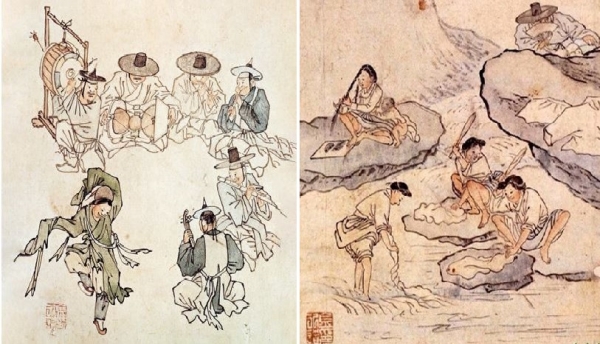
In his forties, Kim Hongdo, who had just returned from the life as an officer, mainly painted flowers and birds, and court events. In 1788, he traveled over the Yeongdong region with Kim Eung-hwan under the order of King Jeongjo, painting scenic spots around the region including Geumgangsan Mountain, and the record also shows that he traveled to Beijing, China with an envoy the following year.
He also participated in the construction of Hyeonryungwon when King Jeongjo brought the tomb of his father, Sadoseja, to Hwaseong, and created a fresco of Yongjusa, the original temple of Hyeonryungwon, which is one of the masterpieces of late Joseon Buddhist painting. These paintings, with the unique use of shading to express a sense of three-dimensionality, are considered to have gone beyond the traditional painting style and created a new style.
In 1791, he again painted a portrait of King Jeongjo and was rewarded with the position of the prefect of Yeonpung, Chungcheong Province. It was the highest position he could rise to as a commoner. Three years later, however, he was dismissed from this post following an accusation from Hong Dae-hyeop, Wiyusa of Chungcheong, that he had "abused people while matchmaking for others." It seems that he was a personable official who provided matchmaking for people but not administratively competent.
After being dismissed from a prefect post and returning to a commoner status, Kim Hongdo was free to pursue his own artistic career, producing masterpieces of landscape, flower and bird, and portrait paintings. In his fifties, Kim Hongdo's paintings show more maturity. Representative works from this period are Haesanseonhakdo, Masang Cheongangdo, and Semado (Washing a Horse), in which bold omissions and rough brushstrokes show the confidence of a master.
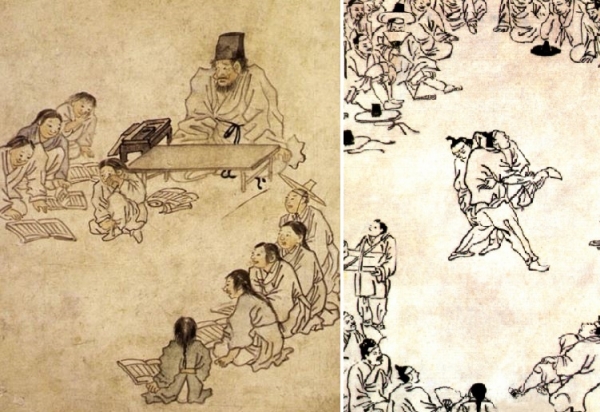
Despite prolific output and high reputation as one of the greatest painters of his time, his life was difficult and his health poor. There were times when he was so poor that he could not even afford enough ink, but he was not a person who was limited by his conditions. Cho Hee-ryong's ‘Hosanoesa’ introduces a famous anecdote that shows this aspect of Kim Hongdo well.
"He was poor, and sometimes did not have enough food to eat. One day a man was selling a plum tree, which looked very strange. He could not buy it because he had no money, but coincidently there was a person who sent him three thousand pieces of money. It was money for a painting. He took two thousand out of it to buy the plum tree, and eight hundred to buy two barrels of wine, and then he gathered a group of like-minded friends to throw a plum-wine party. With the remaining two hundred, he bought rice and firewood, and thus, it did not even last a day."
According to various sources, Kim Hongdo was a very good-looking man.
Some accounts say “Kim Hongdo was strikingly handsome and had tall appearance, which set him apart from the average people. There are also other accounts saying “he had a beautiful appearance and was broad-minded, thus people likened him to a Taoist hermit.
He found pleasure not only in art but also in music. On moonlit evenings, he would entertain himself by playing some music on his geomungo and was even skilled enough to write an impromptu poem.
It was unclear exactly when Kim Hongdo died, but it is assumed that he died in 1806 at the age of 62. This assumption is based on the fact that a letter he wrote in December 1805 was the last known record of his activities, and no further information about him or his creations has been discovered. Roughly 300 of his works have survived to the present day.
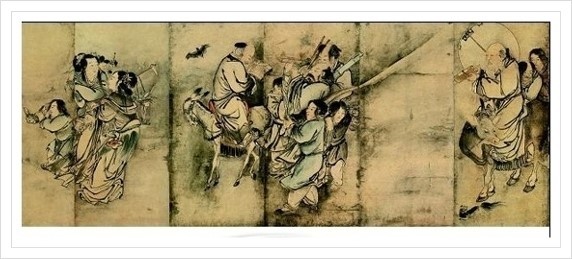
Chang Chin-Sung, Professor of Archaeology and Art History at Seoul National University said, "Danwon Kim Hongdo was a great painter who represented East Asia beyond Korea(Chosun).”
In a lecture titled 'The Myth and Truth of Danwon Kim Hongdo', Chang Chin-Sung, Professor of Archaeology and Art History at Seoul National University, said, “Many Koreans recognize Kim Hong-do as a master of Korean(Chosun; 14-18 th centry) folk painting. However, his talent surpassed the boundaries of folk painting. He was considered an unsurpassed genius and the greatest painter of his time, known for his exceptional skills in various genres of painting, such as landscape, Taoist and Buddhist painting, flower and bird painting, and portraits.”
In particular, Professor Chang emphasized that the painting in which Kim Hongdo's talent was most exquisitely exerted, which he continued to produce from early to old age, and for which he kept developing new experimental compositions and techniques was in fact the 'folding screen painting' rather than 'folk genre painting'.
He added, "The masterpieces that Danwon left such as Group of Taoist Hermits, Haengryeopungsokdo, and Samgongbulhwando are all folding screen paintings. Whether it was a royal painting or a folk painting, his representative genre, including detailed paintings, was also folding screen painting."
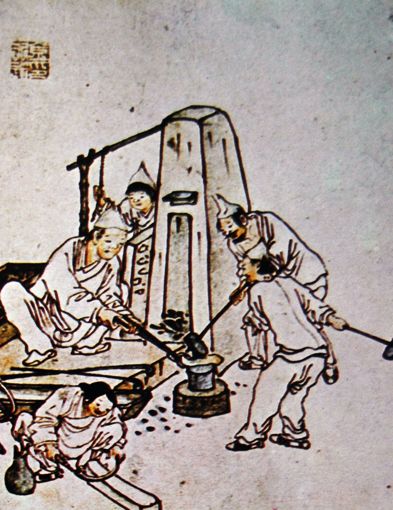
He also said that Kim Hongdo was a true artistic genius, capable of drawing all genres of painting, including folding screen painting and folk painting. He went on to say that in the late 18th century and early 19th century, there was no rival to Kim Hongdo's unparalleled talent in the East Asian art world.
Professor Chang explained Kim Hong-do's exceptional talent is fully displayed in his masterpiece, ‘Group of Taoist Immortals’, which he created at the age of 32 with the painting skillfully capturing the unique expressions and movements of the characters.
He said, “To understand Kim Hongdo, we need to take a look at his family background as well. He did not come from a family of the Dohwaseo painters. During the Joseon Dynasty, influential painter families inherited the position of a painter at the Dohwaseo from generation to generation. Therefore, it was very difficult for someone who was not from a family of painters to enter the Dohwaseo and become the best painter.
Despite being from a family with a lower-ranking military officer, Kim Hongdo managed to surpass his seniors and peers from well-known Dohwaseo painter families through only his exceptional abilities. This made him the most outstanding painter, earning the trust and admiration of King Jeongjo.
It is just remarkable that Kim Hongdo, hailing from a non-painter family, managed to become one of the greatest painters of his era.
Professor Chang continued to say, "Kim Hongdo was unique in that he excelled in various painting genres, unlike painters who focused on one genre. Notably, the year 1776 saw the decline of the Western style represented by the Qianlong Garden, and the emergence of Kim Hongdo who epitomized the Jeongjo period. Following this shift, in the latter half of the 18th century, no other painter in Joseon could rival Kim Hongdo, making him the most preeminent painter in East Asia."
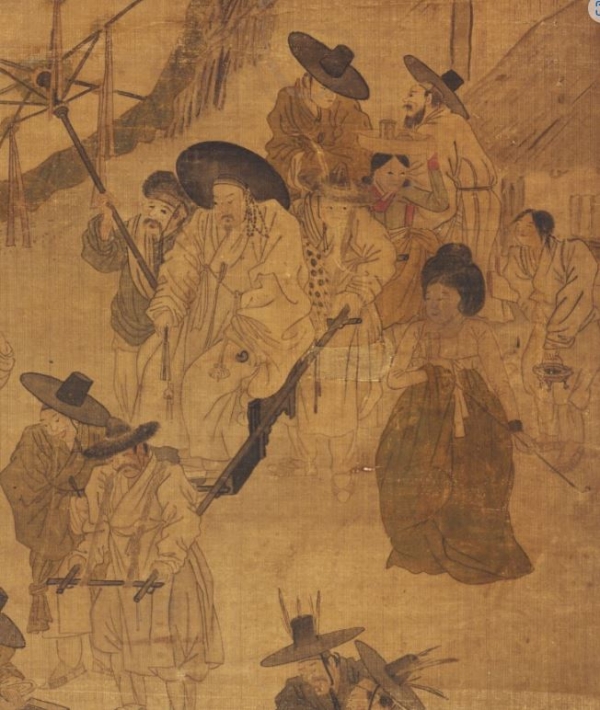
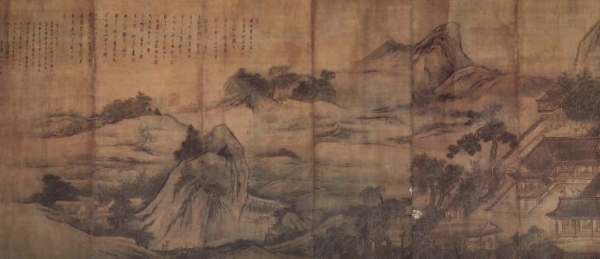
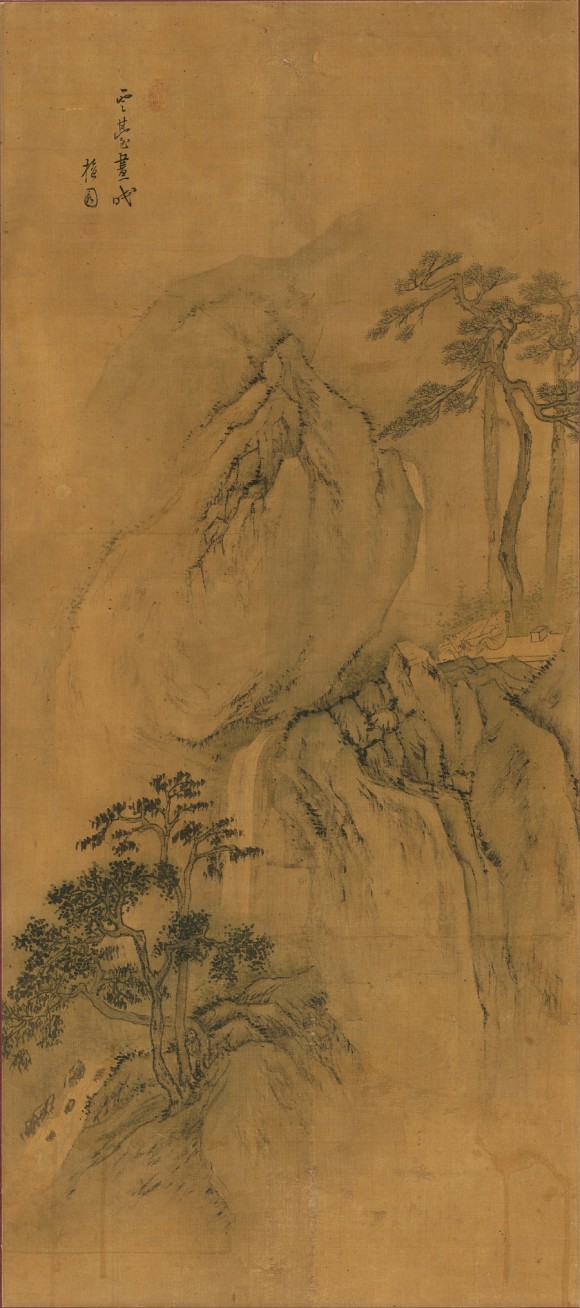
yoojin@wikileaks-kr.org


